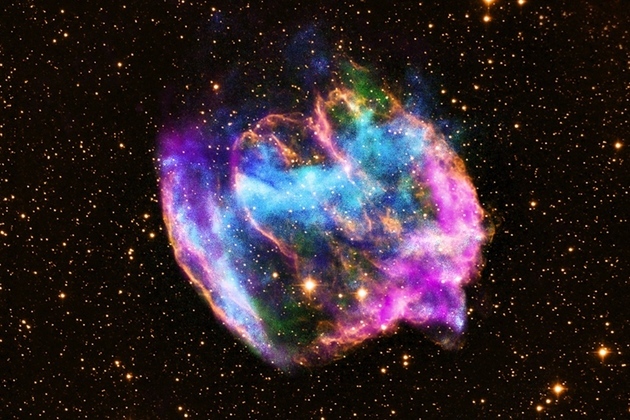According to Nasa's Chandra X-Ray Observatory, we have may have just discovered a newly forming black hole!! This picture shows the gasses rotating about a fixed axis, probably about the axis along the rotation of the star. From what I remember, stars eventually run out of fuel when it begins to fuse heavier elements like Iron. It becomes unable to produce enough nuclear fusion and collapses under its gravity, releasing enough potential energy to ignite an explosion. In the end, it leaves behind either a very dense neutron star (manetar?) or a black hole. Neutron stars emit x-ray impulses, however Chandra did not detect a neutron star which implies the creation of a black hole.
Another interesting fact is the anisotropic distribution of Iron. Chandra's data show its only present in half of the observed spectroscopy. According to the paper, it is consistent with "bipolar/jet-driven Type Ib/Ic SN origin [...] since heavy elements are preferentially ejected along the polar axis of the pro-genitor in these explosions" (what is a progenitor?). Here's a picture of the distribution of gases:
Interested in reading more about this subject? Here's the link:
http://arxiv.org/pdf/1301.0618v1.pdf
http://arxiv.org/pdf/1301.0618v1.pdf
My questions for Dr. Siana: What determines whether the end result of a Supernova is a blackhole or a neutron star? Are there any other products?


